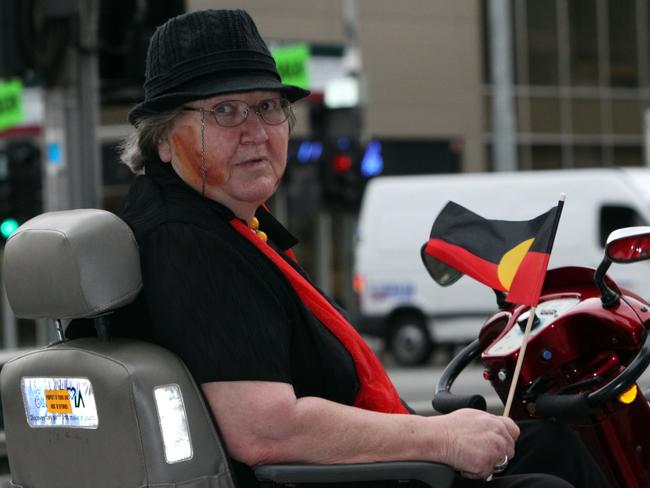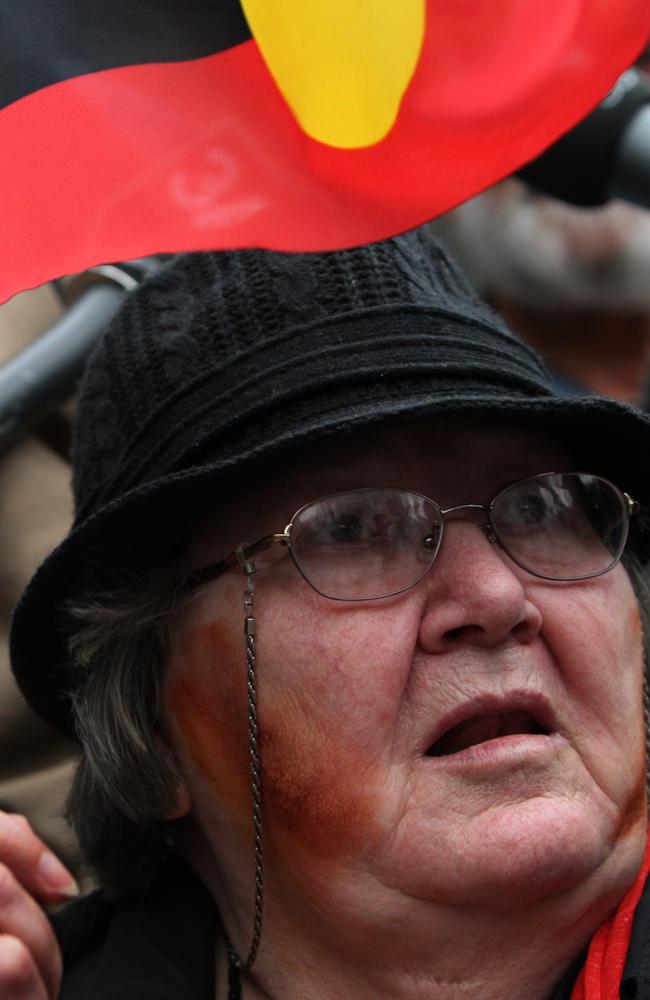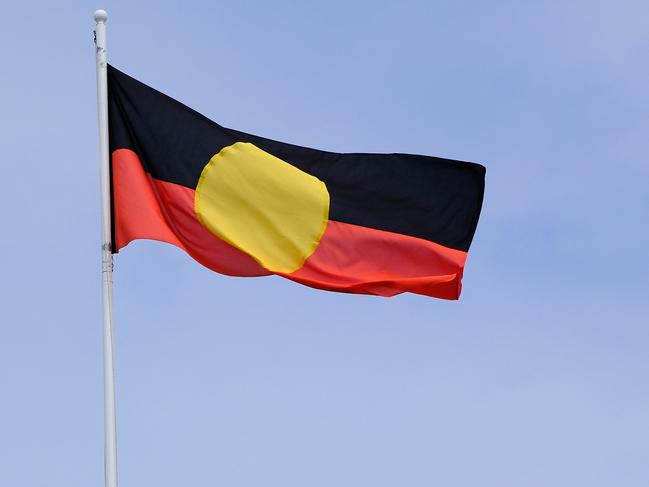Andrew Bolt: New evidence exposes Pat Eatock’s tall tale
Thirteen years ago Pat Eatock sat in a courtroom and claimed I had intimidated, humiliated and insulted her by writing she was a “white Aboriginal”. If only I’d known then I’d been stitched up.

Andrew Bolt
Don't miss out on the headlines from Andrew Bolt. Followed categories will be added to My News.
Thirteen years ago, Pat Eatock sat in a courtroom and told Justice Mordy Bromberg a tall tale which he used to ban two of my articles which I considered a shocking attack on our free speech.
Eatock, a socialist activist who died in 2015, had told Bromberg I had intimidated, humiliated and insulted her by writing she was a “white Aboriginal” who’d chosen to call herself Aboriginal when she plainly had other choices.
Eatock’s barrister, former judge Ron Merkel, then read out her statement.
“I am an Aboriginal person with Aboriginal ancestry.
“My grandmother, Lucy Eatock, was born in Carnarvon Gorge in central Queensland in 1874. This is an Aboriginal birthing place … She was one of the Kirri people.
“My grandmother’s mother was an Aboriginal woman called Kitty …
“My grandmother’s husband, my grandfather, was an Aboriginal man, Bill Eatock.”

If only I’d known then I’d been stitched up.
Having gone through the “evidence” he himself no doubt believed, Merkel smeared me as Nazi-like for doubting people like Eatock, the lead plaintiff in this action on behalf of nine “fair-skinned Aboriginals” I’d written about.
“This kind of thinking led to the Nuremberg race laws,” he raved, even hinting I could inspire genocide: “The Holocaust in the 1940s started with words and finished with violence.”
It worked. Justice Bromberg banned my two articles, ruling I had racially discriminated against Eatock for saying, among other things, she had a choice how to identify herself.
No, she didn’t, he insisted, and nor had the others in the case. They were born Aboriginal.
It was a momentous decision. Since then, very few journalists – seeing what had happened to me – have dared question the white Aboriginals such as Professor Bruce Pascoe now increasingly found in politics and universities.
Who wants to risk being damned as a Nazi and a racist? Certainly not the barrister hired by my newspaper.

I’ve often blamed myself for not pushing him even harder to challenge Eatock’s story, and can’t forget my horror when his cross-examination of Eatock ended where it should have started.
Barrister: Some of your relatives do not identify themselves as Aboriginal, as you do?
Eatock: That’s right.
Barrister: They’ve made different decisions about their Aboriginal identity?
Eatock: That’s right.
Barrister: Nothing further.
But now I’ve learned exactly why most of Eatock’s relatives disagreed with her.
Last month I did what never occurred to me was possible 13 years ago. I asked professional genealogists of Roger Karge’s brilliant dark-emu-exposed.org website to check Eatock’s family tree.
The results should embarrass everyone who used Eatock’s story to censor the debate on people choosing to identify as Aboriginal.
I should first add a disclaimer. Maybe these genealogists made mistakes, although Karge’s website has now uncovered many politicians and academics, including Pascoe, who wrongly claim to be Aboriginal and not been faulted once.
And maybe Eatock honestly believed some old family gossip she perhaps spun into proof she was Aboriginal.
But here is what these genealogists found, now to be read in massive detail on dark-emu-exposed.org.

Every one of those Eatock claims I quoted are false. None of Eatock’s ancestors was Aboriginal.
Her grandmother Lucy wasn’t born in an “Aboriginal birthing place” in Carnarvon Gorge, but at her parent’s home in Springsure, 180km away, according to her birth certificate.
That certificate also shows Lucy’s mother wasn’t an Aboriginal woman called Kitty, but a Scottish woman, Jane, who was attended at the birth by a doctor and midwife.
Lucy looked not Aboriginal but like a carbon copy of Jane, as photos show.
There is no known “Kirri” tribe, nor record of any “Kitty”, who seems an invention inspired by a Tongan girl called Lizzie or Tacrow, taken in by Lucy’s parents for a few years after Lucy’s birth.
Nor was Eatock’s grandfather Bill an Aboriginal. Eatock made a false conclusion from the colour of his skin.
In fact, the genealogists found a missing birth certificate showing Bill’s father was Richard Rose, who came from St Vincent and the Grenadines, in the West Indies, and had a brief affair with a married white woman.
Rose turned out to be the son of a British slave-owner and, almost certainly, an African slave called Harriet. He inherited some money when his father died, and sailed to Australia to become Eatock’s “Aboriginal” ancestor.
In fact, Eatock’s genealogy shows she should never have been allowed to bring her case against me. She had no legal standing, not being Aboriginal I was right to say she’d just chosen to be one.
And the judge, it seems, was inadvertently misled.
Originally published as Andrew Bolt: New evidence exposes Pat Eatock’s tall tale




